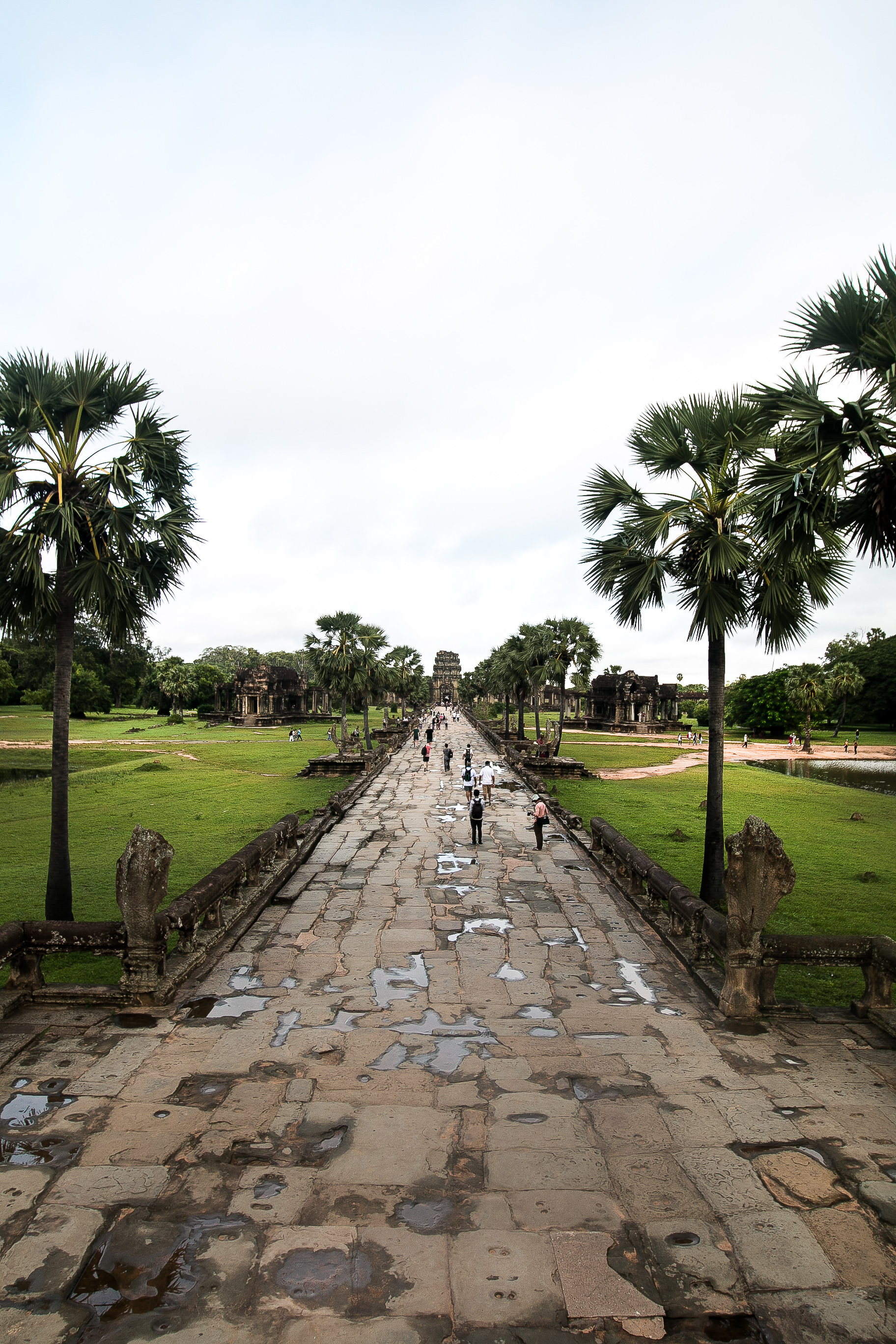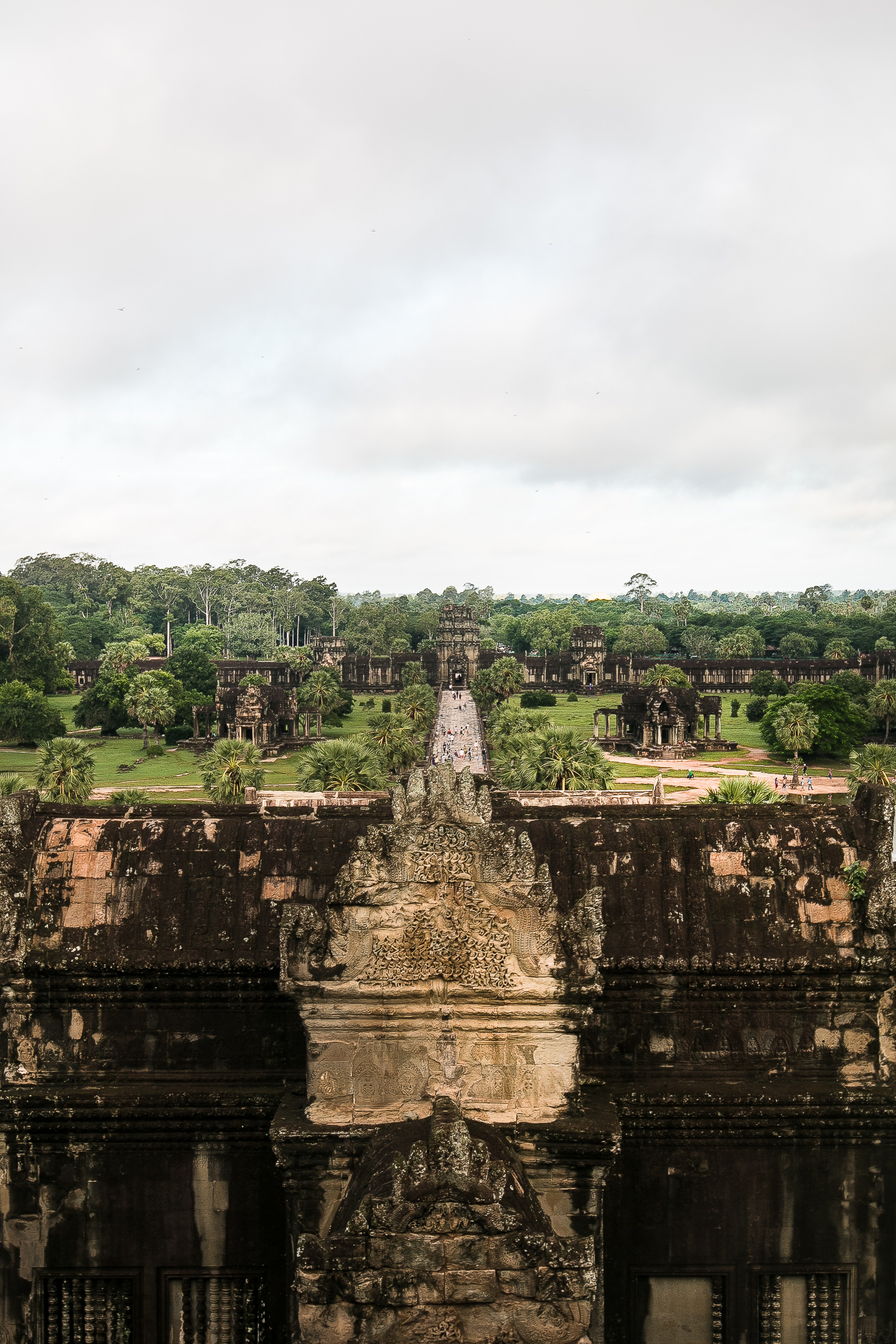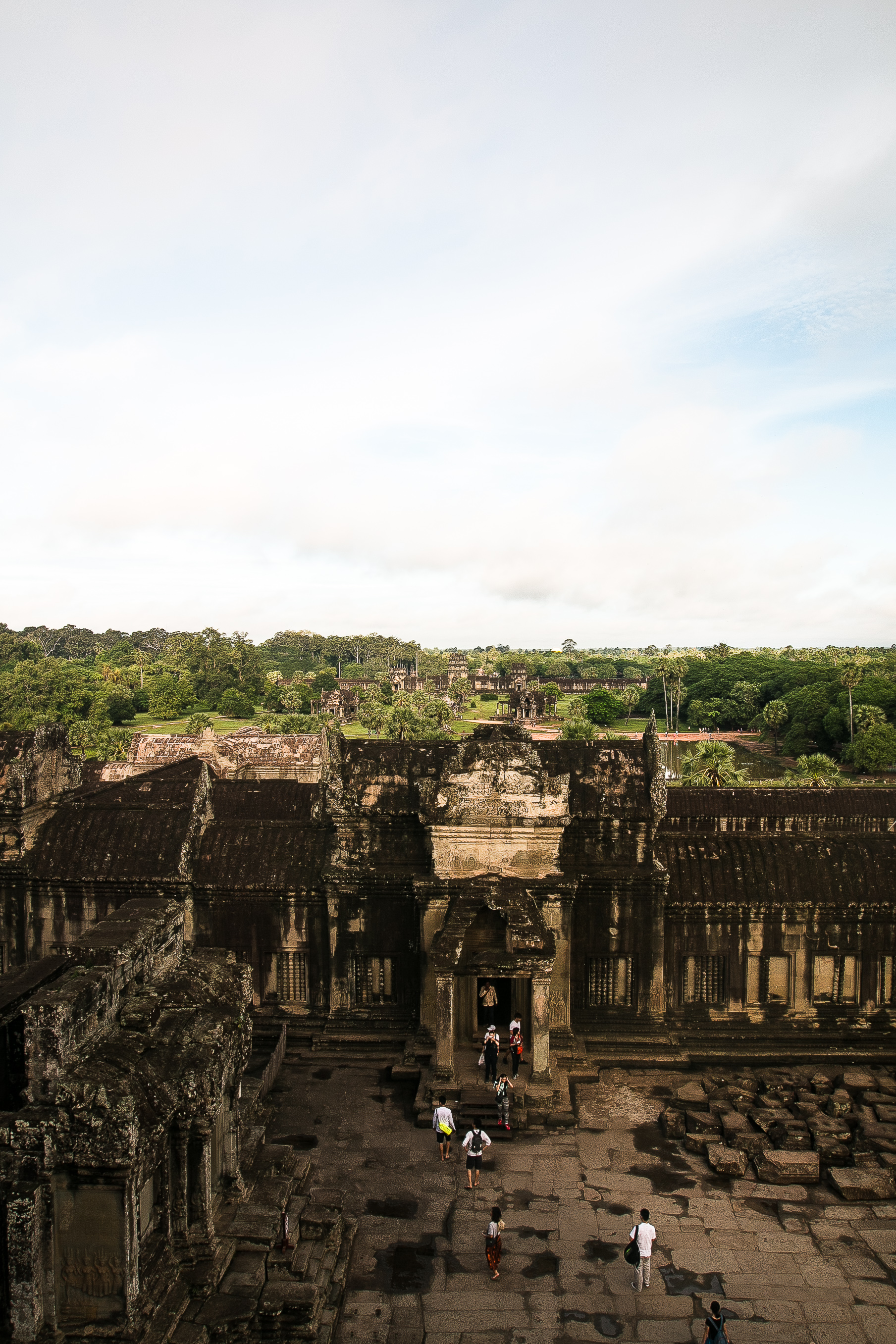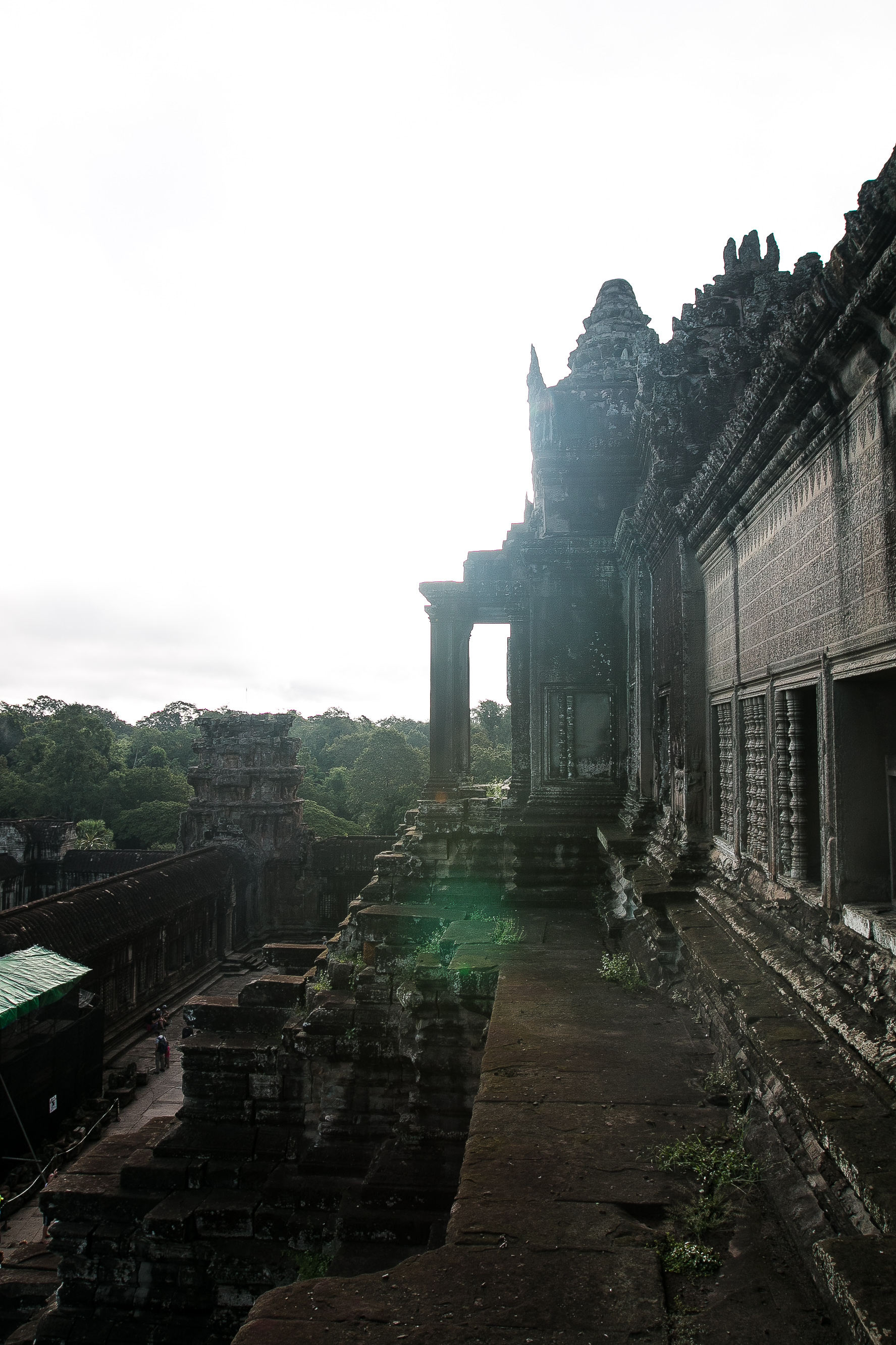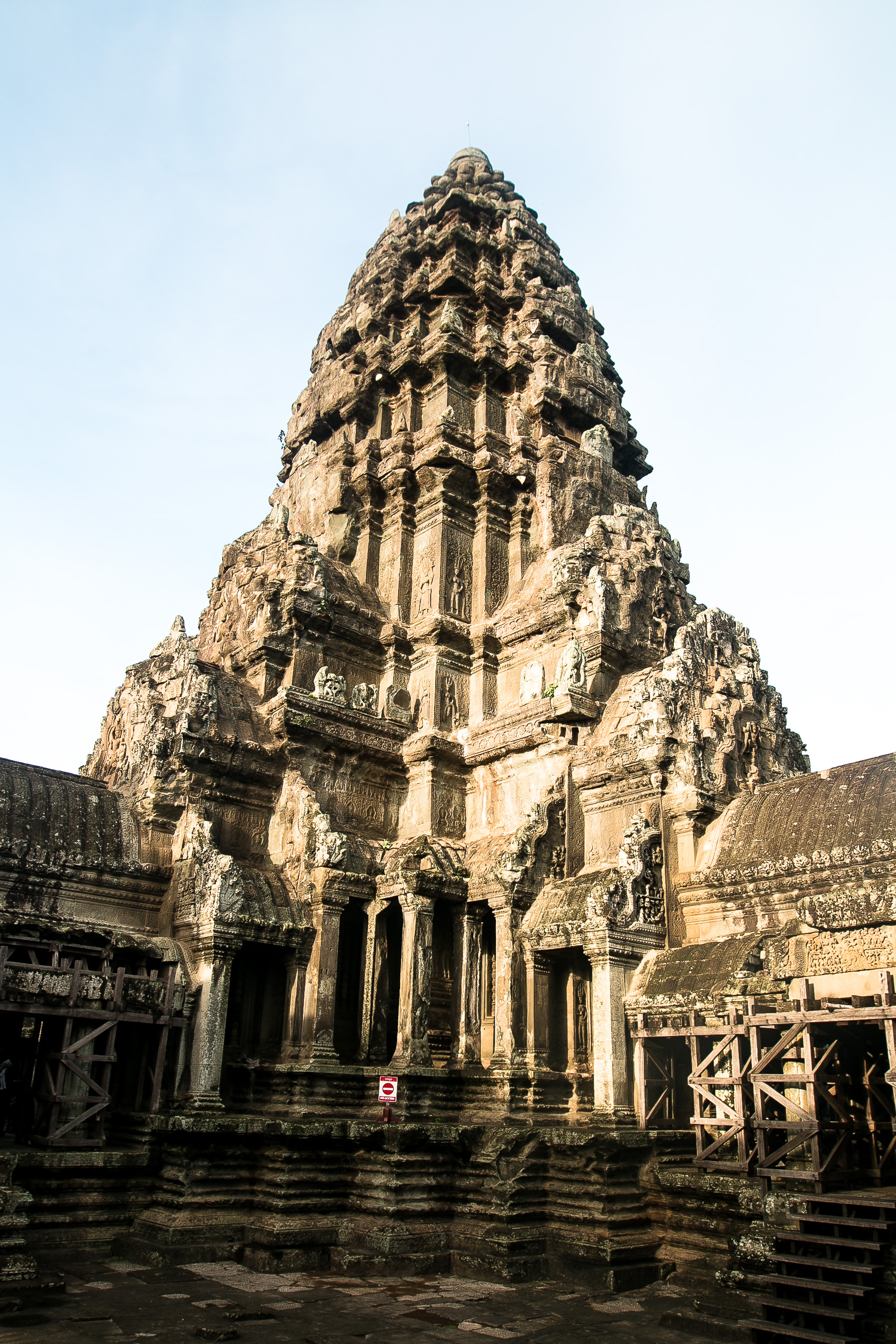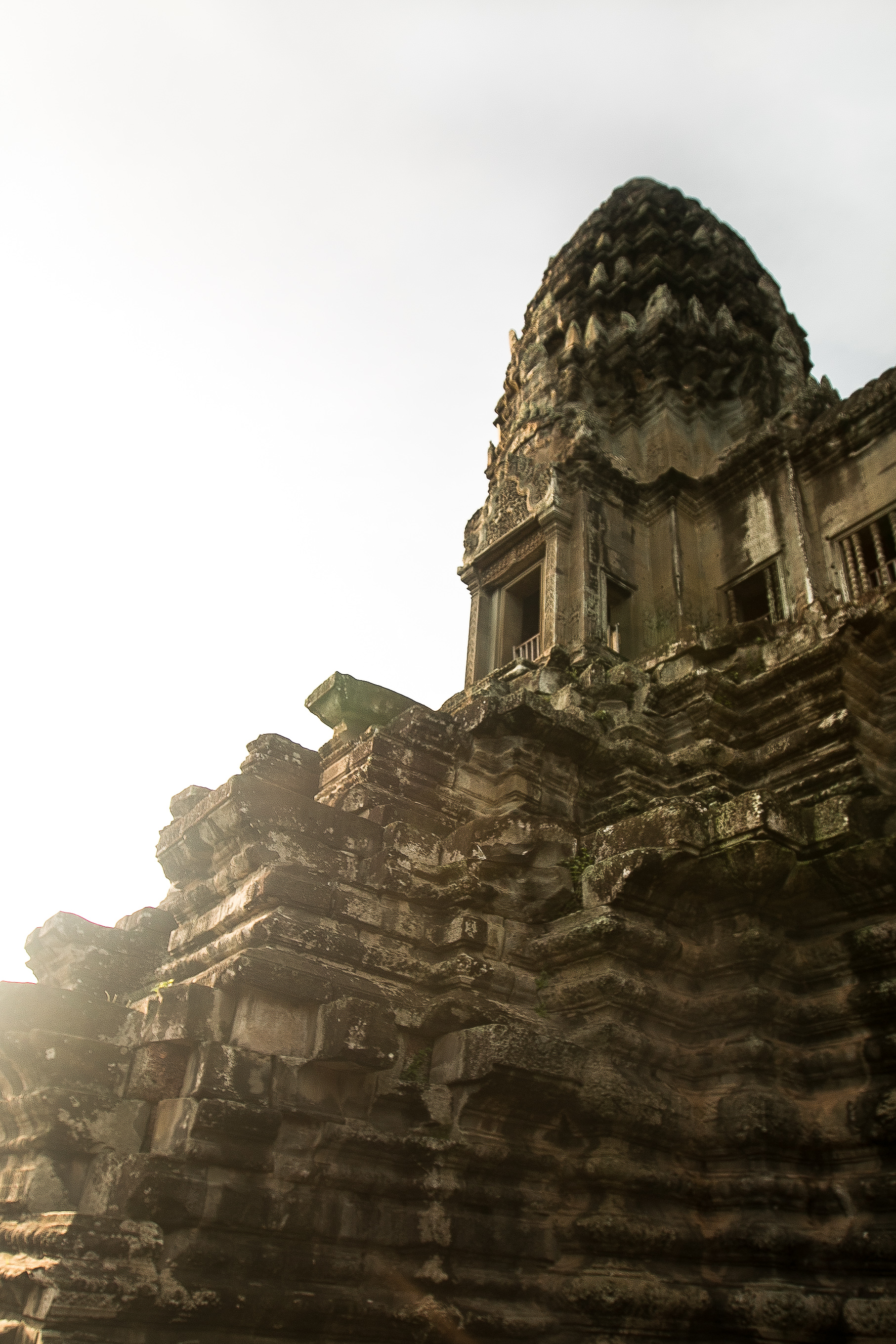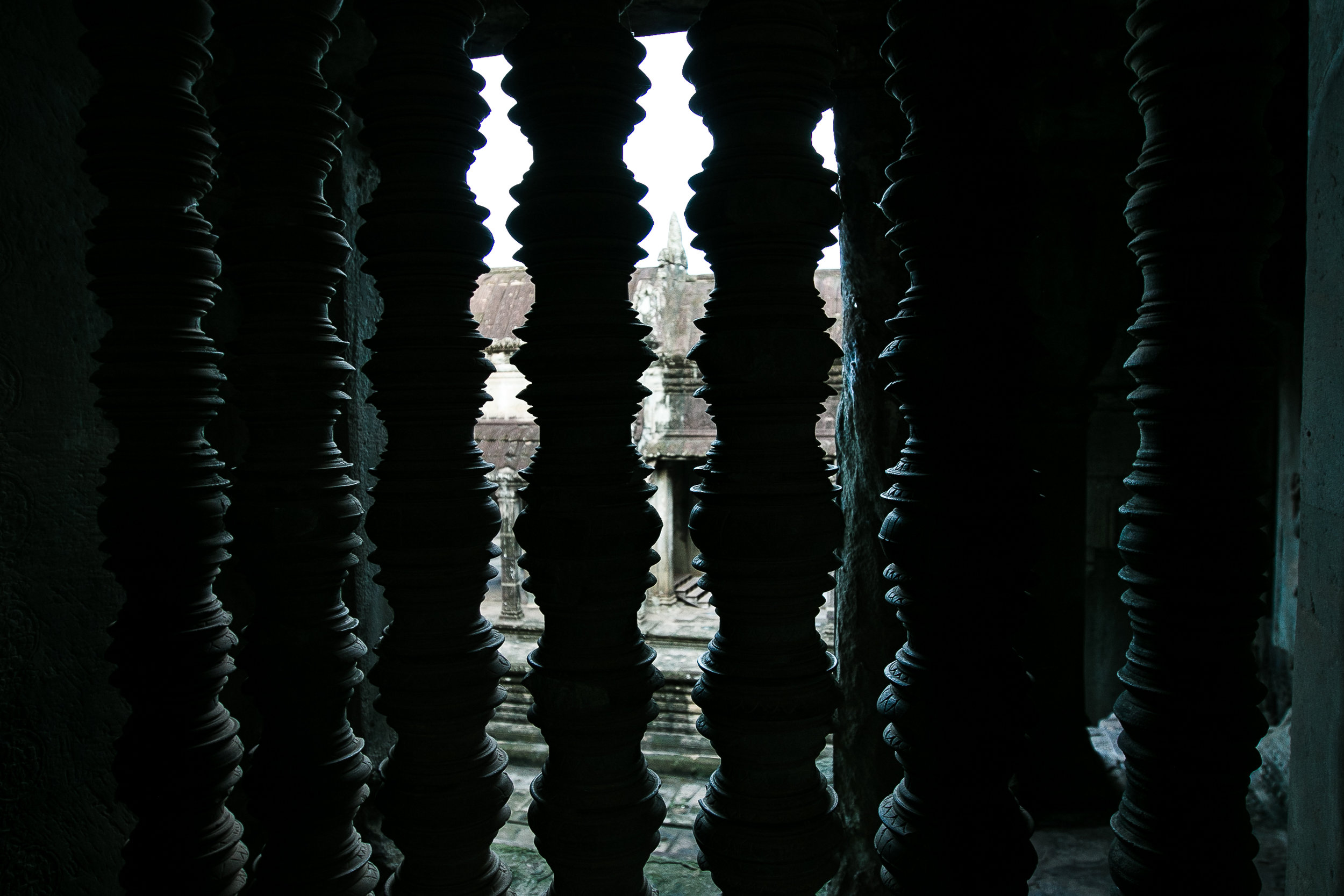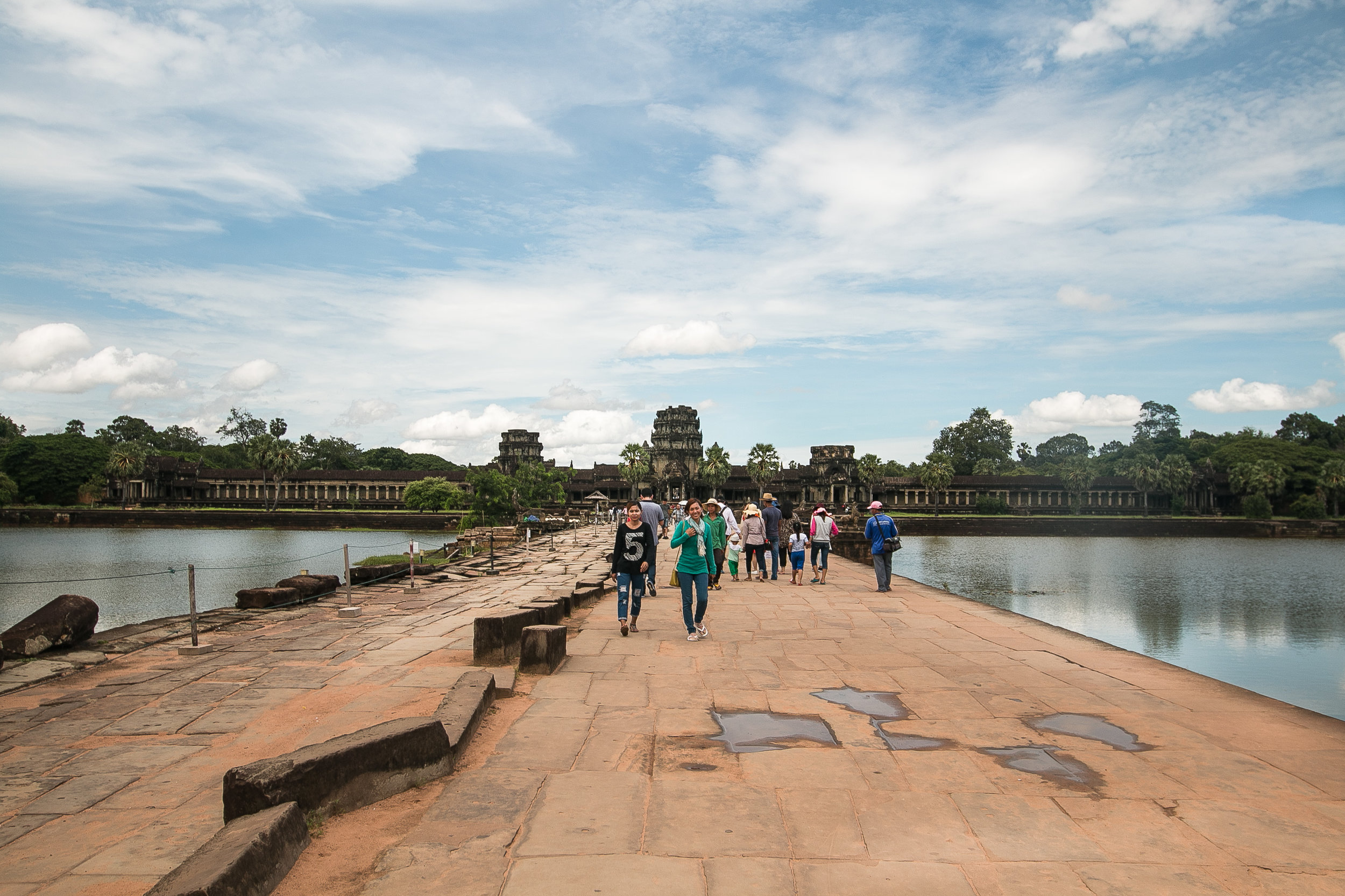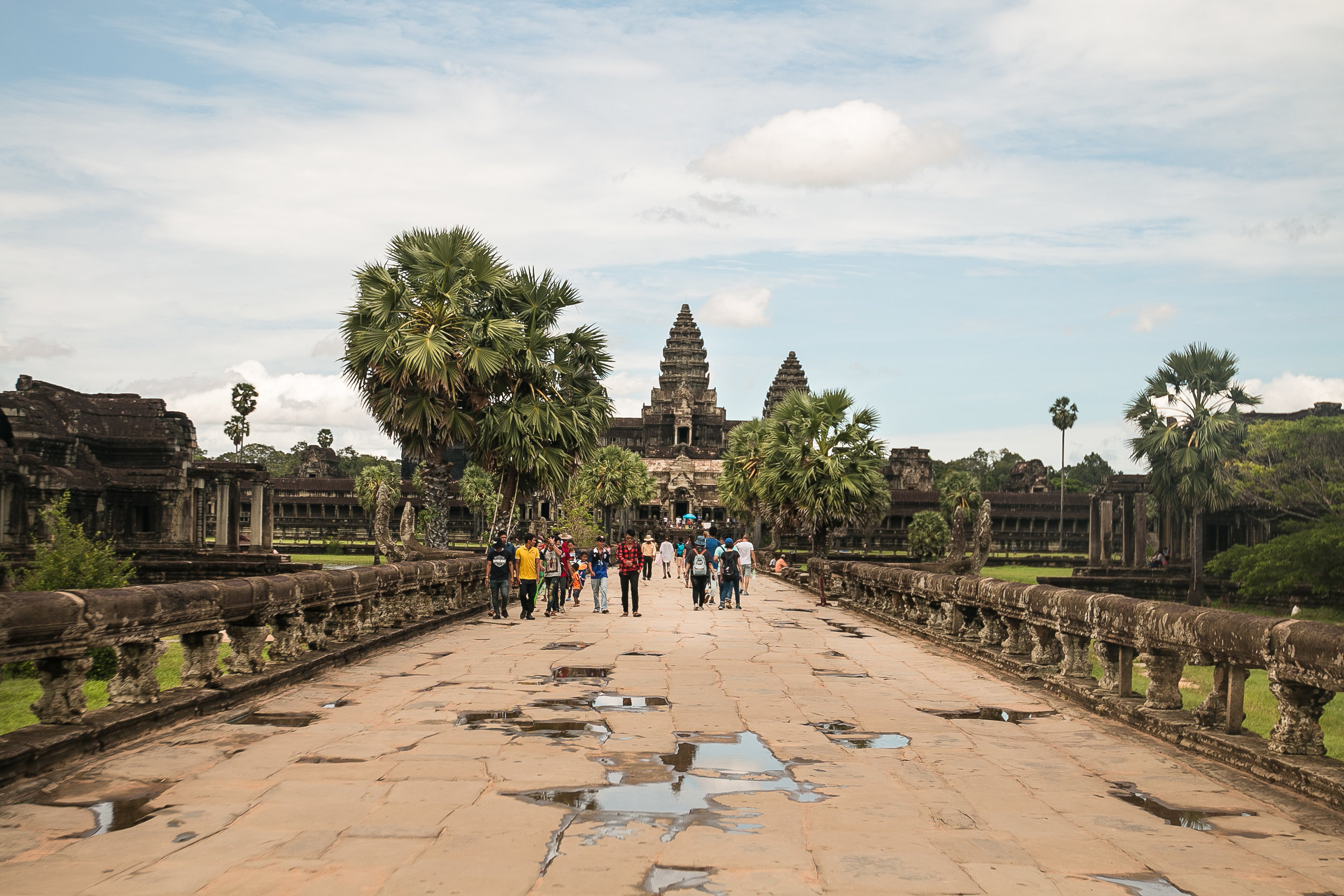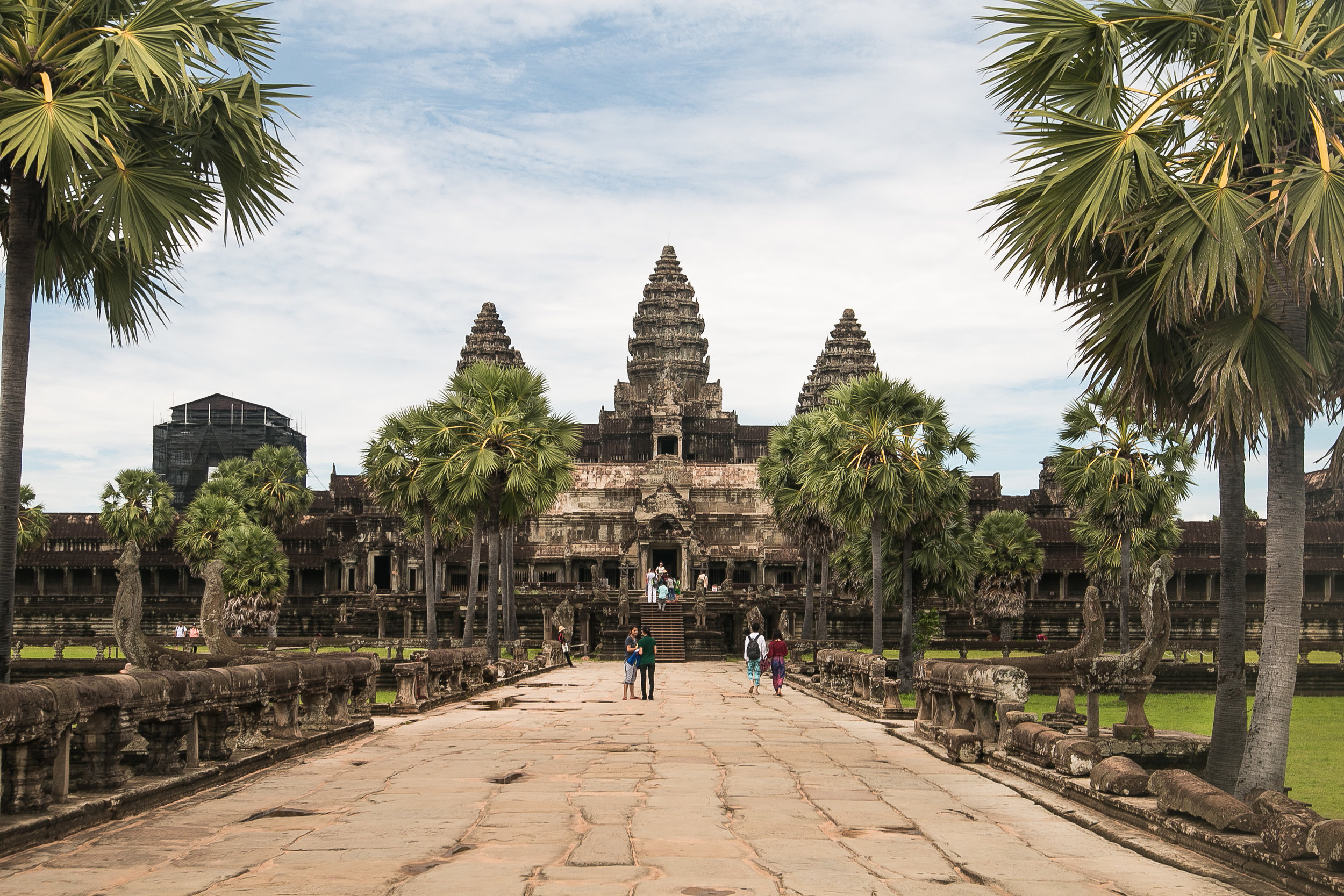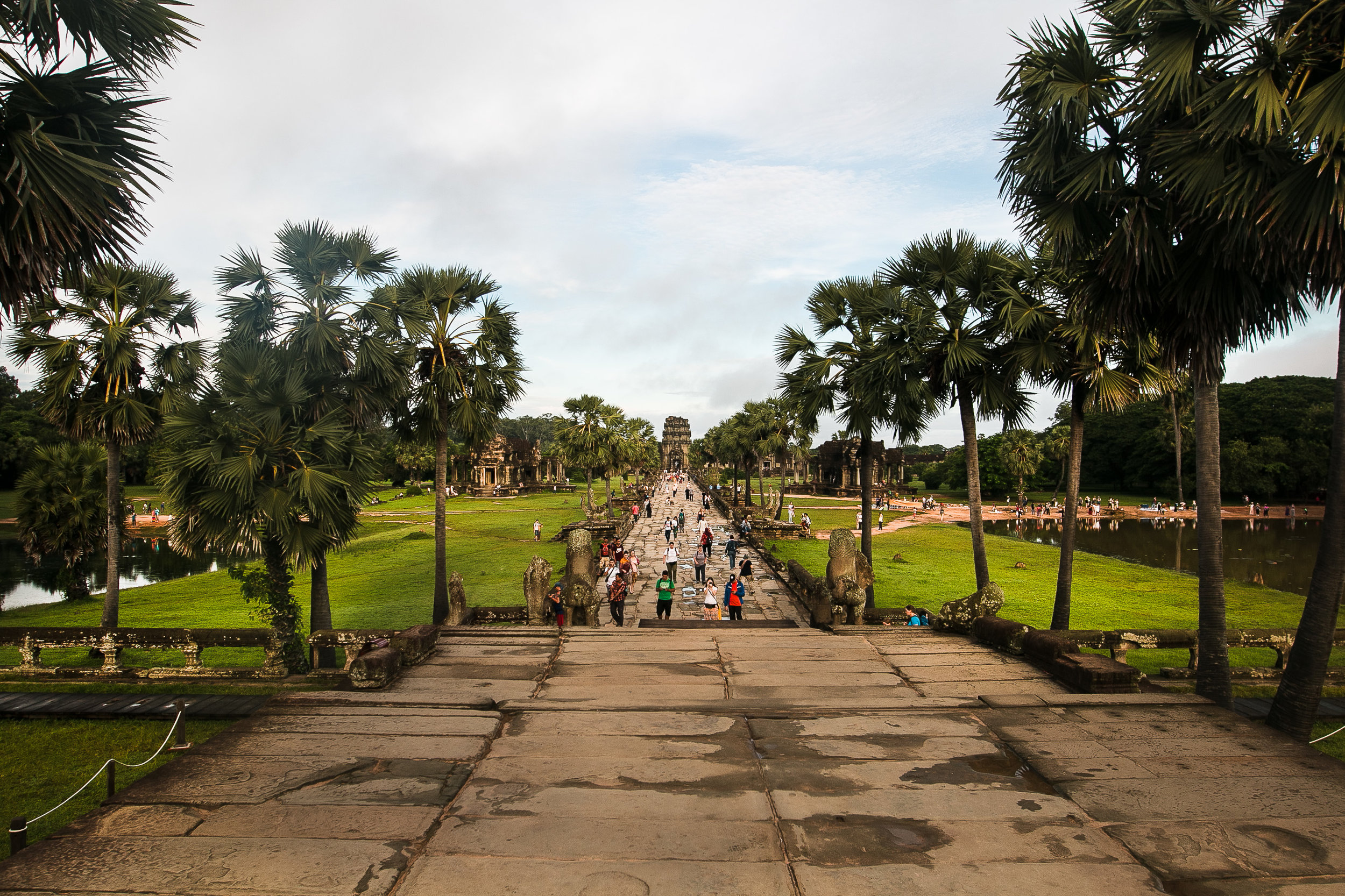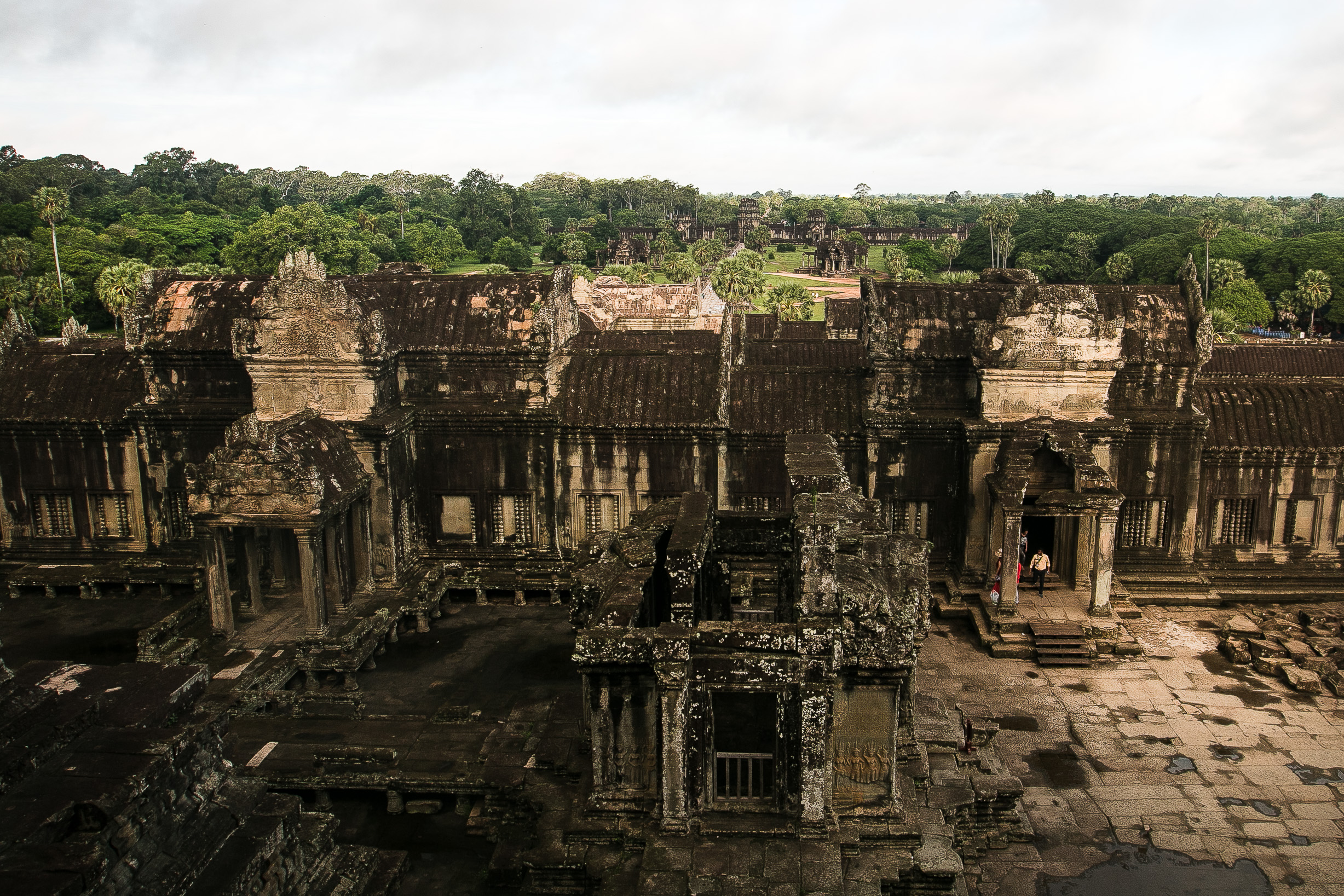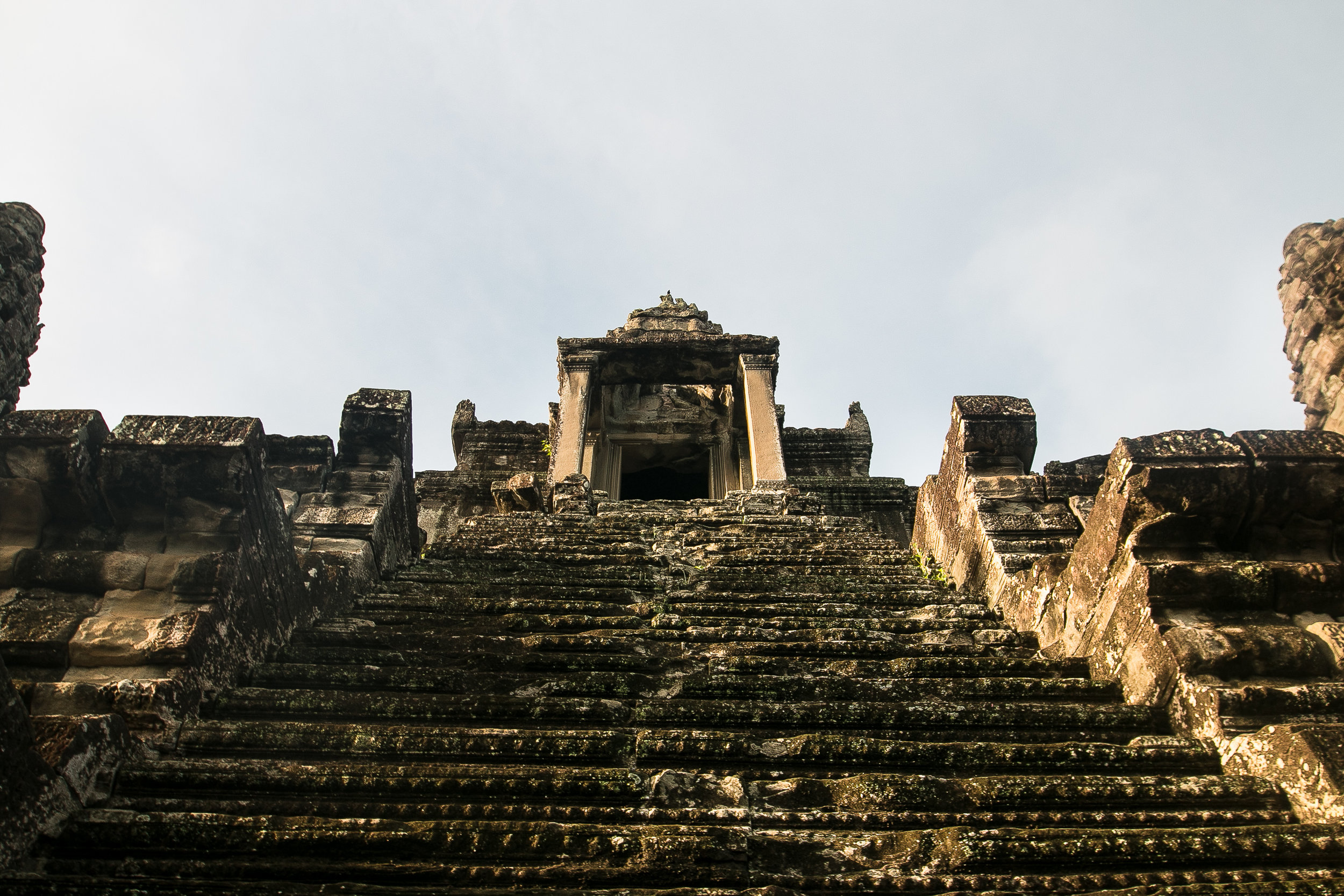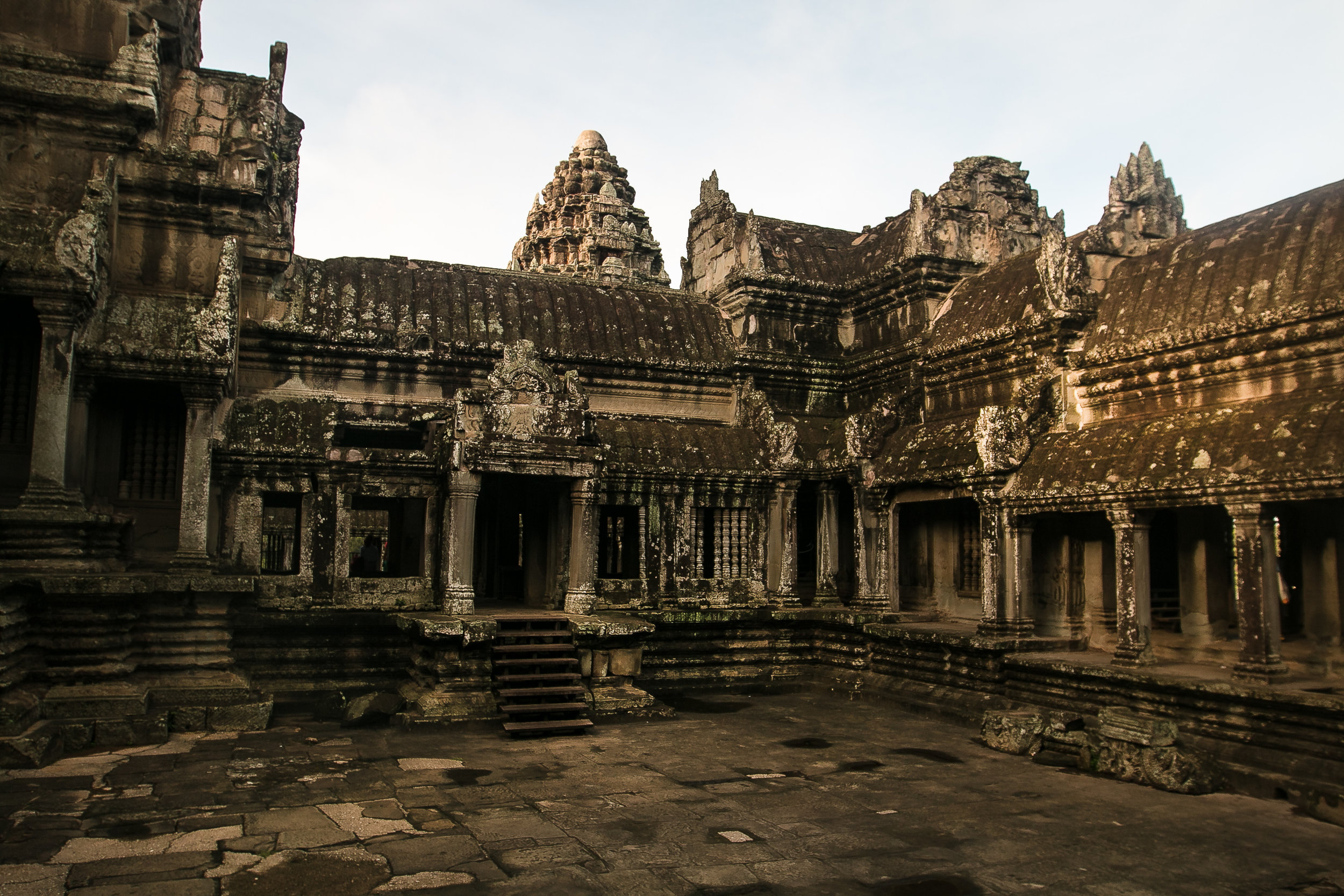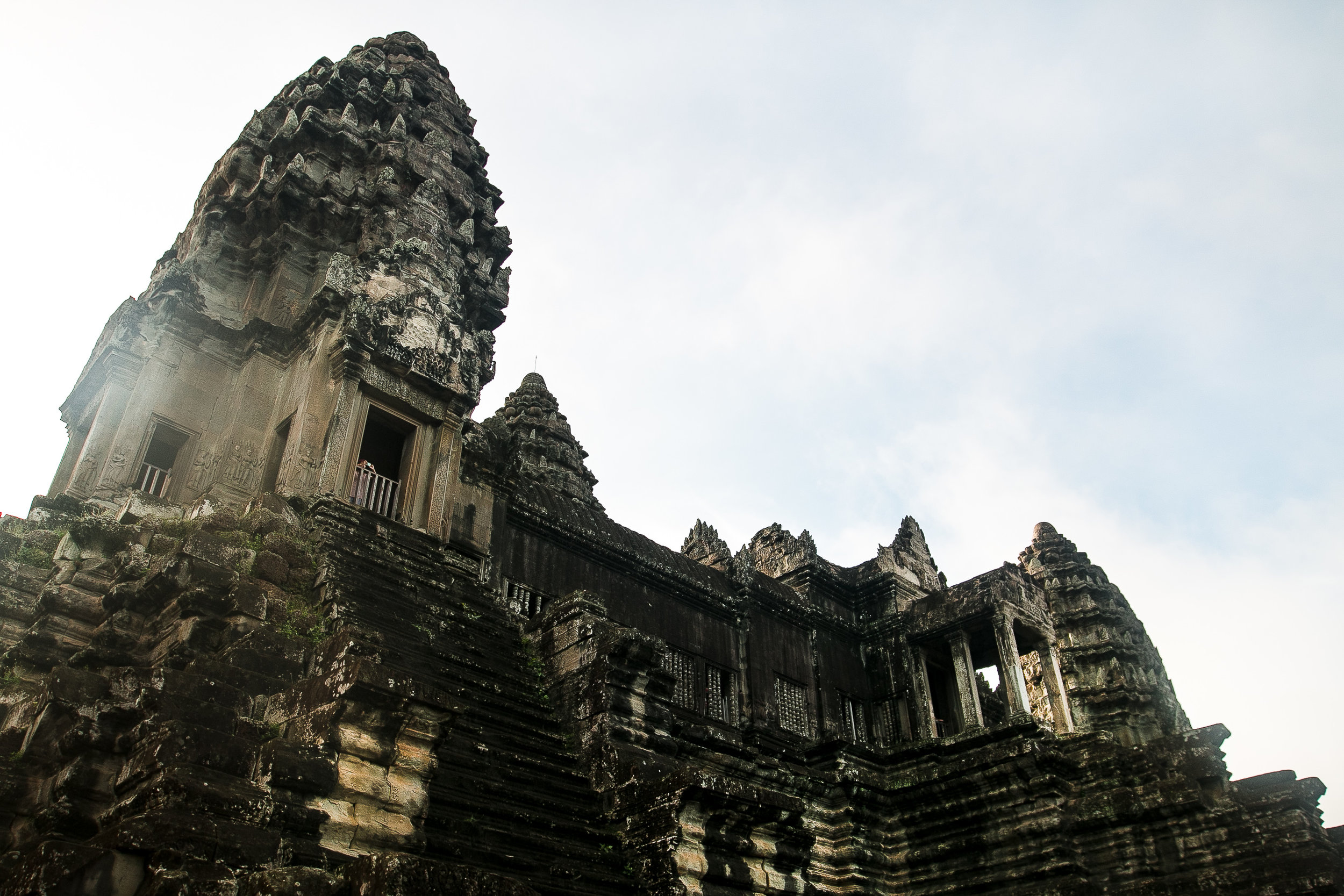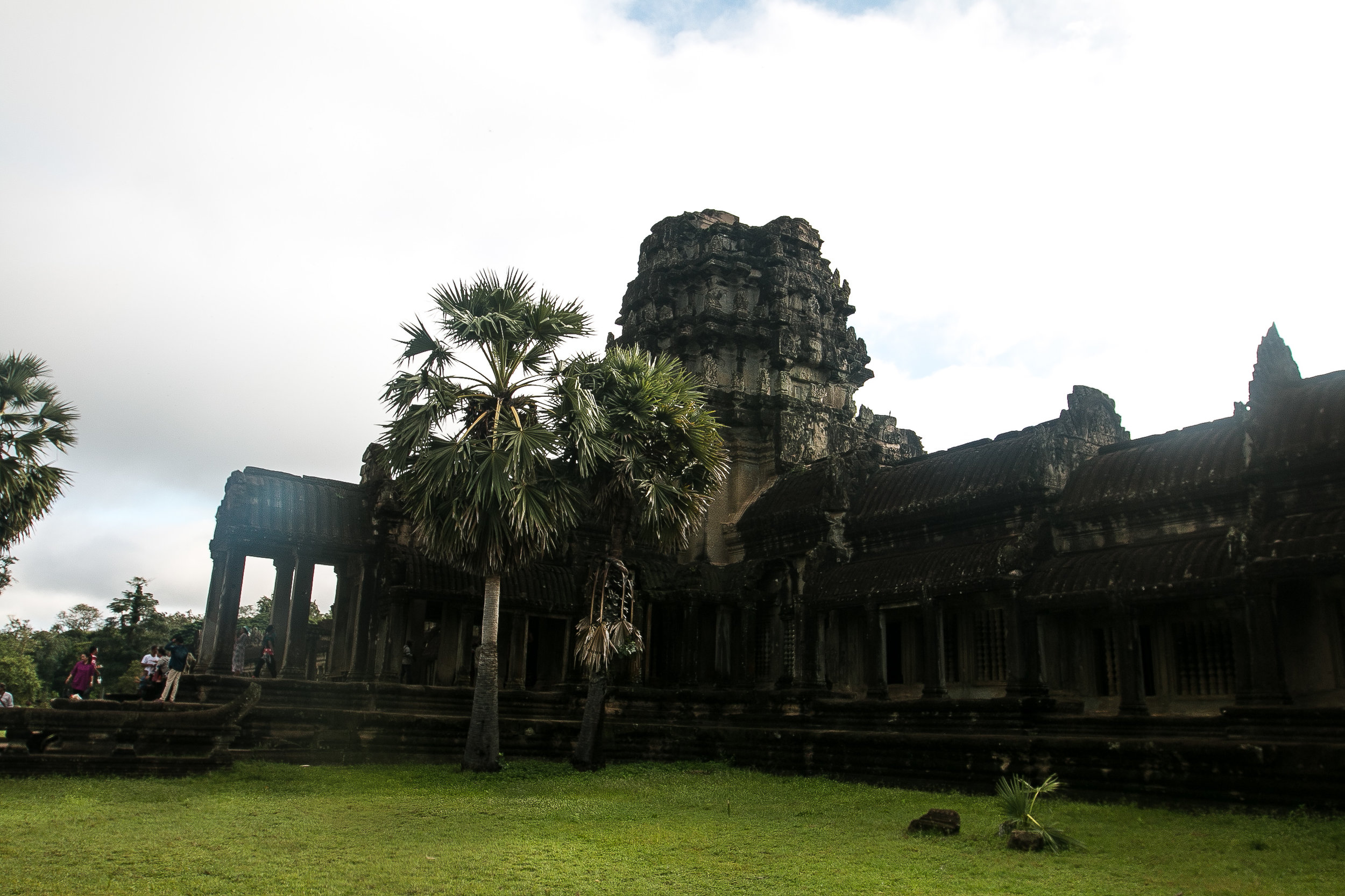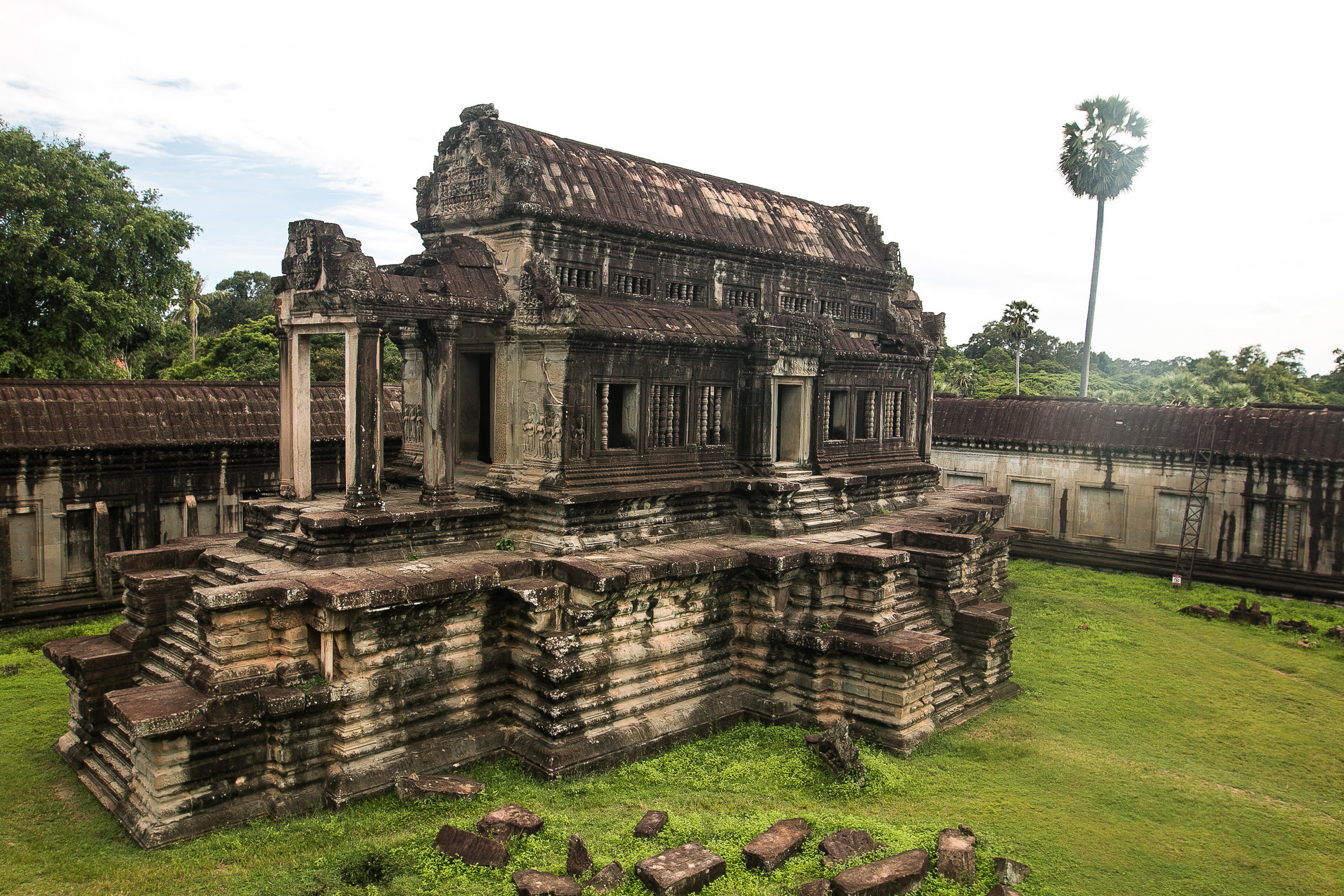Angkor Wat In Siem Reap, Cambodia.
Unquestionably, the most iconic attraction to behold in the country of Cambodia, even making its appearance on the Cambodian National Flag; Angkor Wat stands as the world's largest religious monument, spanning 402 acres. Originally constructed as a Hindu temple for lord Vinshu, the temple eventually became a Buddhist holy ground by the end of the 12th century due to warring dynasties. Evidence to support this can be seen on the various reclaimed Hindu statues throughout the temple grounds bearing carved-over Buddha faces.
Similarly to the adjacent Cambodian temple, Phnom Bakheng*, historians believe that Angkor Wat was also constructed to represent Mount Meru*, a Hindu take on Mount Olympus*, where all of the Hindu gods reside. This idea further supports the hypothesis of human migration*, as aggregate mythological and spiritual lore presents similar storylines and characteristic values across varied religious paradigms.
Interestingly enough, the name Angkor Wat roughly translates to "City of Temples" in today's modern tongue. This is quite fitting, considering the grounds are so large and accommodating that they used to host many different services, such as: classrooms, bathing houses for the King, libraries, shops, and various places for worship. One thing we tend to forget when merely gawking at these grand monuments is how similar they are to modern-day expressions when presented in relation to something more familiar to our contemporary understanding. What else can you think of in our society that allows for people to gather, study, host events, and even express communal worship? Community Centres... Think about it! Seems like we haven't really changed that much in the past 12-thousand years, after all.

